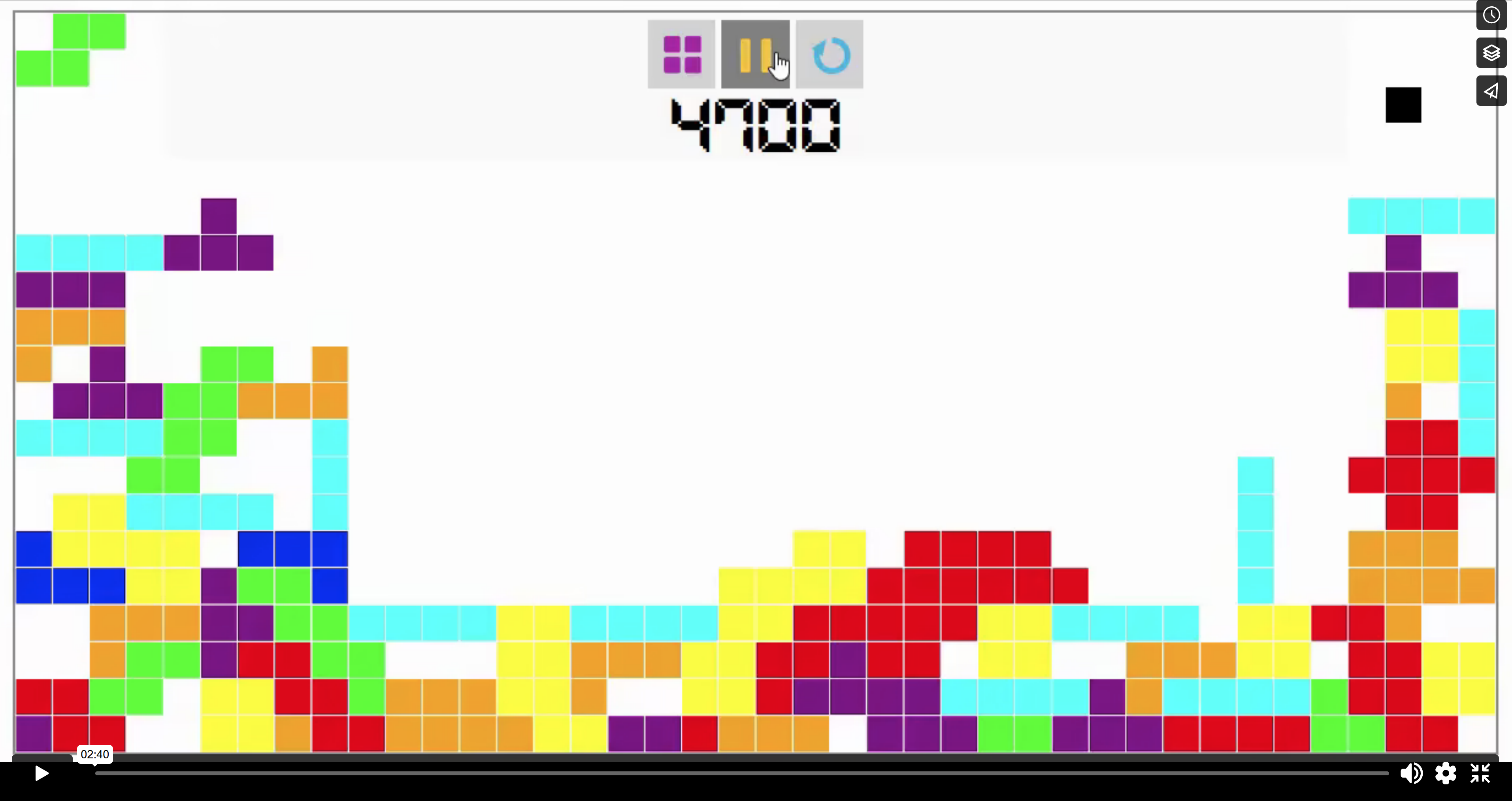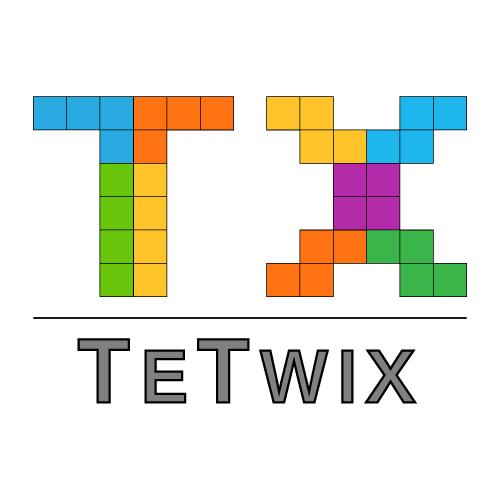- Introduction
- Project Identity
- Project Objectives
- User Needs
- Cognitive Processing
- Experience Goals
- End Goals
- Life Goals
- Pseudo-personas
- Personas
- Primary Persona
- Secondary Persona
- Supplemental Persona
- Negative Persona
- Questions, Options, Criteria (QOC)
- Design Ideas
- Usability Testing
- User Guide
- User Guide Instructions
- Play the game
- You can see a demo of the game here
- Improvements
- Development
- Bibliography
Tetris GamR (Game Resurrection)
- Play the game
- GitHub repo: https://github.com/danielamariei/tetwix
- You can see a demo of the game here: TeTwix
The game proposes a modern version of Tetris, it supports multiplayer game modes, while user(s) are able to use natural I/O devices and interaction methods such as: gestural (Leap Motion), locomotion (Makey Makey), etc. The game is attractive for various population segments and can be used as a means for having fun or to carry out cardio exercises, a serious game, and many others.
Contributors
In this section we will describe the main factors that build the identity of our project; this includes: a logo for our project, some color schemes that our application will use, typography, conceptual associations made by the users of our application and the emotional reactions they have with respect to it.
We started out to create a collaborative Tetris game and we where inspired by the famous chocolate double-bar, Twix.
The general color scheme of out games was a colorful Tetris theme found at http://goo.gl/ezmiVD. We have combine this with shades of gray in order to have a balanced palette.
The project uses the Gautami typeface (font-family) which gives a nice straight look that matches the Tetris pieces.
We went through a couple of propositions before we have reached this final version. Below you can see some sketches for the project logo.
One of the first associations we want the users to make with respect to our application is spending time in family, while having fun -- emotional reactions. We want to promote our application as one that can be used as a mean of having fun in family, where parents and children form teams in order to make a high-score, or play one against another. This will enable family members to bond, while having fun within the comfort of their homes.
Another associations we want our users to make is technologically advanced. Our purpose is to make them emotionally interested and curios. This desiderate will be obtained through the use of natural interaction methods (e.g. gestural, locomotion, audio etc.).
While playing the game you will notice some levels sponsored by our partners. When you complete such a level you will receive a special achievement trophy on behalf of our sponsors.
These levels are easily recognizable, the sponsor logo will be placed on the game board background.
Taking into account the business factor, one way to obtain revenue would be to promote different product/companies/etc. This can be incorporated in the game quite easily through logos placed on the game board background.
When talking about users, the most important aspect to take in account is their goals, which in essence is what motivates them. The goals of the users are in direct correspondence their cognitive processes. And since there are three types of user goals, there will also be three levels of cognitive processing. This is a key process which we need to take into account, revealing what could the goals, emotions and experiences be for our users.
In this level the user is directly concerned with what stimulants our application has -- the sensory aspects of the application. This entails making rapid decision about what is good, bad, safe or dangerous. In order to satisfy his experience needs, we need to make the user feel smart, cool and likewise to remain focused and in control when using our application.
The part of the application that achieves all of this desiderates is the central gameplay, where users need to control pieces, make rapid decisions and simultaneously have fun. In order the be sure we meet this requirements, special considerations need to be made in order for the gameplay to provide the right experience.
At this level, the user manages simple, everyday behaviors. We need to define the user’s motivations for performing the tasks associated with out product. Such example include: spending quality time with family members and relaxation.
At this, final level, the user consciously takes into consideration and reflects upon past experience; we need to be able to support a person’s long time desires and motivation, causing it to connect with our product. Such desires could be: popularity, respect of peers, attractiveness. In order to support such desiderates, our application will enable the user to share his high-scores with his peers using social networks as a distribution medium.
In order to better understand the needs of the people we are designing the system for, we will break the audience into smaller groups (segments). These (pseudo-)personas will identify significant behavior patterns while synthesizing the most relevant goals and characteristics the users that belong into a certain segment have.Keeping them in mind will help us make rational and informed decisions at every step of the project development process.
What game speed selecting mechanism should we use in the user interface?
- C1: It is easy for the user to make the action (low user effort).
- C2: The user receives continuous feedback.
- C3: What the user can do is obvious.
- C4: The user can make the action fast.
- C5: The cognitive load on the user is reduced (the 7 rule).
- C6: The mechanism respects Hick's law.
- C7: The represented model is the same as the mental model.
The option with the highest number of points is chosen.
| Criteria | Drop-down list | Radio buttons | Range input |
|---|---|---|---|
| C1 | * | * | |
| C2 | * | * | * |
| C3 | * | * | * |
| C4 | * | * | |
| C5 | * | * | |
| C6 | * | * | |
| C7 | * | ||
| Total | 2 | 6 | 7 |
What board style should we use in the user interface?
- C1: Full board movement capabilities.
- C2: Power-ups capabilities.
- C3: What the user can do is obvious.
- C4: Screen compactness.
- C5: The represented model is the same as the mental model.
| Criteria | Single | Split | Model |
|---|---|---|---|
| C1 | * | * | |
| C2 | * | * | |
| C3 | * | * | |
| C4 | |||
| C5 | * | * | |
| Total | 4 | 0 | 4 |
What user input types should the application accept?
- C1: It is easy for the user to make the action (low user effort).
- C2: The user receives continuous feedback.
- C3: What the user can do is obvious.
- C4: The user can make the action fast.
- C5: The cognitive load on the user is reduced (the 7 rule).
- C6: Direct manipulation.
- C7: Ease of implementation.
- C8: The user does not experience fatigue.
The options with a score above and including 4 points will be selected.
| Criteria | Mouse | Keyboard | Gamepad | Gestural | Locomotion | Audio |
|---|---|---|---|---|---|---|
| C1 | * | * | * | |||
| C2 | * | * | * | * | * | * |
| C3 | * | |||||
| C4 | * | * | * | * | * | |
| C5 | * | * | * | * | * | * |
| C6 | * | * | * | * | ||
| C7 | * | * | * | * | ||
| C8 | * | * | * | |||
| Total | 7 | 7 | 7 | 4 | 5 | 2 |
Sketches were to made in order to point out the major ideas and directions for this project. The most important questions that we wanted to answer were what are the inputs and controls for the game, how is the game board going to look like and what power ups we are going to use and how to they work.
We have decided that the game is going to be controlled with multiple devices. You don't have to tick any check-box just play either with a keyboard and mouse, game controller or a LEAP Motion controller. With every device you can control left-right direction of a falling piece, rotate it and drop in place if you have made up your mind. Below you can see the sketches for this interactions:
Since TeTwix uses two falling pieces the game board needed to adapt this feature. We came up with 3 styles:
In a game with a single style board, players will receive points by clearing lines that are filled from left to right. Pieces can flow freely so that the piece that falls from the right can be places on the left of the board and vice-verse and all the available power ups can be used.
In a game with a split style board, players will receive point when they clear a line on the same level in both of the sides. Pieces can't pass from one side to another. Not all power ups will be available and those that are can be used only in corresponding side.
In a game with a model style board, players will receive points in regards to how well they match the given model and a minimum percentage is required to pass to the next level. Pieces can be moved freely on the board and all power ups are available.
The usability test comprises the following list of steps:
- Greeting and Consent
- User Background Information
- User Backround Information Form
- Usability Test Plan
- Usability Post-Questions Form
- Add sound for gameplay
- Add voice commands support
- Fix bugs: click on gameboard, speed increase on restart, scroll
Folder structure:
docs: project documentation, now available in the mainREADME.md, keeping it for referenceserverless: game files including, images, javascripts, stylesheets, the game guide and index.htmlusability_plan: usability planwiki-resource: dump of various useful files from the first storage location inluding: personas in html format, images, and txt files with various notes
- Sabin-Corneliu Buraga, HCI Course: https://profs.info.uaic.ro/~busaco
- Ștefan Negru, HCI Laboratory: https://profs.info.uaic.ro/~stefan.negru
- http://www.usabilityfirst.com/usability-methods/usability-testing/
- https://content.cu.edu/irm/stds/usability/
- A. Cooper, R. Reimann, D. Cronin, About Face (3rd edition), Addison-Wesley, 2007
- P. Kortum (ed.), HCI Beyond the GUI. Design for Haptic, Speech, Olfactory, and Other Nontraditional Interfaces, Elsevier 2008
- Donald A. Norman, The Design of Everyday Things, Basic Books, 2002
- Jesse James Garrett, The Elements of User Experience: User-Centered Design for the Web and Beyond (2nd Edition) (Voices That Matter), New Riders, 2010
- Primary persona image source: https://secure.flickr.com/photos/15472273@N07/










































